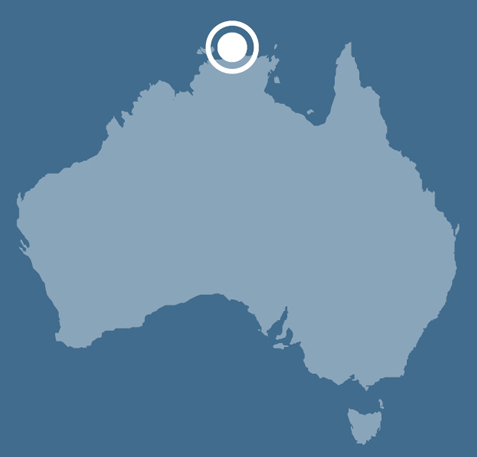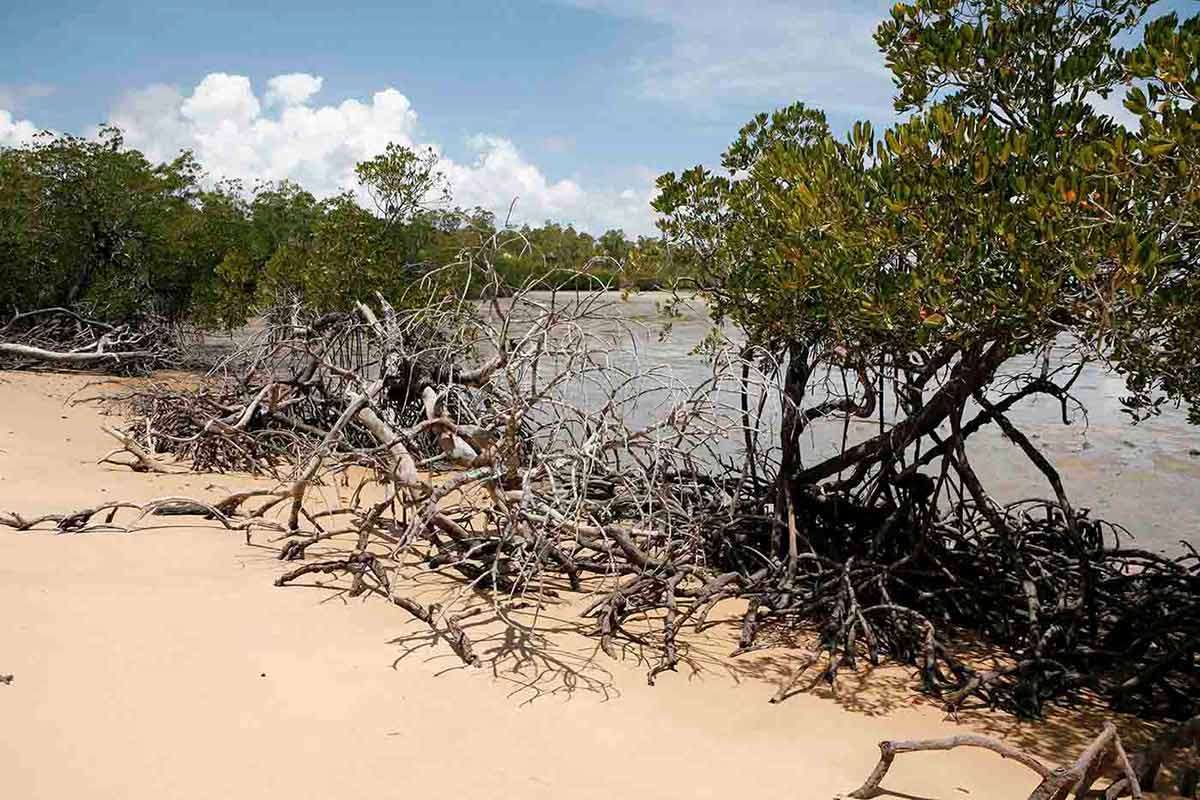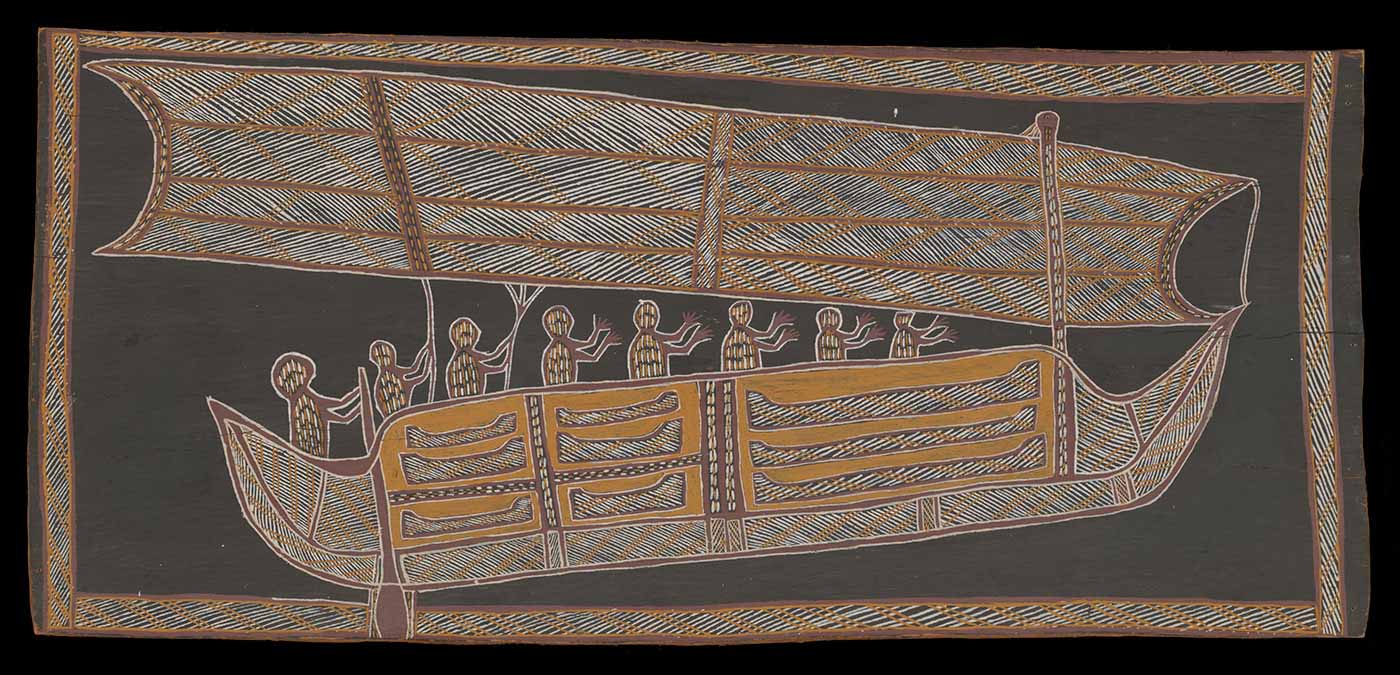
Yolngu country
For hundreds of years, the Yolngu people of the north coast of Australia regularly traded with visiting seafarers from Makassar.
Setting the scene
Laklak Burarrwanga, Yolngu elder, 2008:
Long time ago, when the north-east wind blew, the Mangatharra [Makasar] would travel from their place up north in Indonesia to Arnhem Land. They came in Macassan boats called praus … They planted tamarind trees and traded with Aboriginal people. The Aboriginal people, they traded the trepang [sea cucumber] … and the Mangatharra traded knives and material.
First contact with overseas visitors on Australia’s northern coast, unlike many other parts of the continent, was with Indonesian fishermen rather than Europeans.
These fishermen from Makassar came each year and stayed for several months, harvesting and processing trepang. They worked with local Aboriginal people, and traded objects, including metal knives, fishhooks, pottery and glass in exchange for turtle shells, pearls and pearl shell.
Bati (ceremonial spear)
When Norwegian naturalist Carl Alfred Bock visited Makassar in 1879 he observed:
The principle street [of Makassar] … runs along the beach for more than two miles. Beginning at the southern end are a row of white-washed brick stores … Spread out in front of the premises … many hundredweight of trepang … which are being dried out in the sun previous to shipment.
While in Makassar, Bock acquired three spears, which he later sold to the British Museum. For many years they were thought to have been made in Makassar, until research in the 1950s identified them as Yolngu.
Makassan prau painting
Cultural exchanges between Yolngu people and the trepang traders sometimes involved Yolngu people accompanying the Makasar on their return voyage home.
In the 1940s, Yolngu man Djaladjari told of his trip there, via the island of Timor, as a young boy in the 1890s:
It was on Leti [Island] that we saw balanda [Europeans] for the first time … We walked about the town with its houses, just the same as Darwin, and there were coconut trees too.
Djaladjari, quoted in RM & CH Berndt, Arnhem Land: Its History and its People, 1954.
Did you know?
Trepang (sea cucumbers) were harvested in northern Australian waters by Indonesian fishermen from Makassar. They were then sold in China, where they were considered a delicacy.
What do you know about Yolngu country
More activities
Activity:
Yolngu man Djaladjari travelled to Makasar via Timor as a boy in the 1890s. Have you ever travelled to a different region or country? What happened? How did it feel? Share your story with a classmate and listen to their story. What are the similarities and differences between your experiences?
Activity:
Have a class discussion about the different cultural groups in your community. How have these groups shaped the character of your community?
Explore more on Community stories


